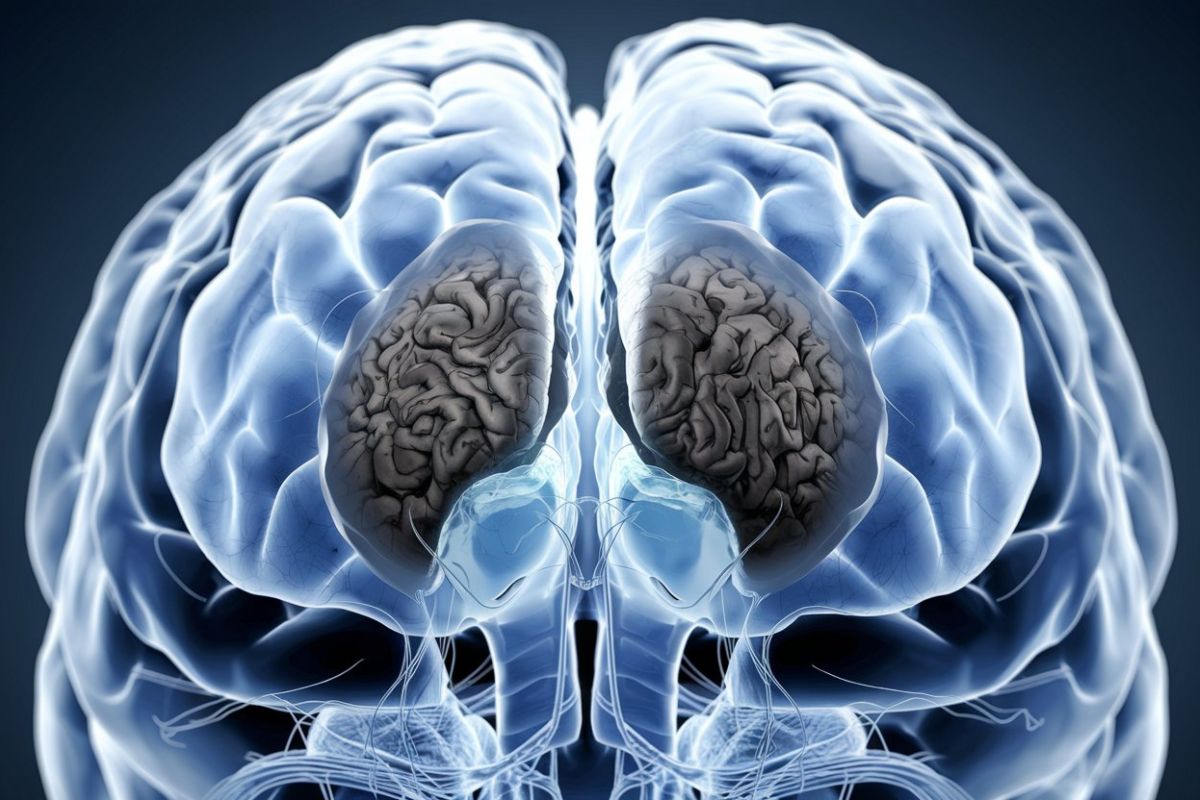
What is Centrotemporal Epilepsy? Centrotemporal epilepsy, also known as benign rolandic epilepsy (BRE) or benign rolandic epilepsy with centrotemporal spikes (BECTS), is a common childhood epilepsy. It typically begins between ages 3 and 13, peaking around 7-9 years old. This condition involves focal seizures starting in the brain's centrotemporal region, which controls motor functions. Seizures often feature twitching or tingling on one side of the face or tongue, sometimes affecting speech. Most seizures occur during sleep and are brief, lasting no more than two minutes. While many children outgrow the condition by adolescence, some may experience learning difficulties or behavioral issues during the active phase.
Key Takeaways:
- Centrotemporal epilepsy is a common form of childhood epilepsy, with seizures often starting between ages 3-13. Most children outgrow the condition by adolescence, and treatment is generally effective.
- Seizures in centrotemporal epilepsy typically involve twitching, numbness, or tingling in the face or tongue. Most seizures are brief and occur during sleep, with a good prognosis for long-term recovery.
Understanding Centrotemporal Epilepsy
Centrotemporal epilepsy, also known as benign rolandic epilepsy (BRE) or benign rolandic epilepsy with centrotemporal spikes (BECTS), is a common form of epilepsy in children. This condition is characterized by focal seizures that originate in the centrotemporal region of the brain, which is responsible for motor functions. Let's dive into some key facts about this condition.
-
Prevalence: Centrotemporal epilepsy accounts for approximately 10-25% of all childhood epilepsies. This makes it one of the most common types of epilepsy seen in children.
-
Name Variations: The condition is also known as benign rolandic epilepsy (BRE) or benign rolandic epilepsy with centrotemporal spikes (BECTS). These names highlight the specific brain region involved.
-
Age of Onset: Seizures typically begin between the ages of 3 and 13, with a peak incidence around 7-9 years old. This age range is crucial for diagnosis.
-
Gender Distribution: There is a slightly higher incidence in boys compared to girls. This gender difference is subtle but notable.
-
Family History: About 30% of children with centrotemporal epilepsy have a family history of epilepsy, suggesting a genetic basis. This familial link can help in early diagnosis.
Symptoms and Seizure Characteristics
Understanding the symptoms and nature of seizures can help in identifying and managing centrotemporal epilepsy effectively.
-
Symptoms: Seizures often start with twitching, numbness, or tingling sensations in one side of the face or tongue. These symptoms can interfere with speech and may cause drooling. The child usually remains fully aware during these seizures.
-
Seizure Duration: Seizures are typically brief, lasting no more than 2 minutes in most cases. This short duration is a key characteristic.
-
Seizure Frequency: Many children experience infrequent seizures, and in some cases, only one seizure occurs. This infrequency can sometimes delay diagnosis.
-
Generalized Seizures: Some seizures can generalize to tonic-clonic seizures, which involve both sides of the body. These are more severe but less common.
-
Nocturnal Seizures: The majority of seizures (70-80%) occur during sleep, often shortly after the child goes to sleep or just before they wake up. This timing can be a diagnostic clue.
Diagnostic Tools and Findings
Accurate diagnosis is essential for effective treatment and management of centrotemporal epilepsy.
-
EEG Findings: Children with centrotemporal epilepsy have spikes on their EEG in the centrotemporal regions of the brain, which helps confirm the diagnosis. These spikes are a hallmark of the condition.
-
MRI Findings: MRI tests are usually normal in children with centrotemporal epilepsy, as the condition primarily involves electrical activity rather than structural abnormalities. This normal MRI can help rule out other conditions.
-
Diagnosis: Doctors diagnose centrotemporal epilepsy based on the description of the seizure and may use EEG and MRI tests to support the diagnosis. A thorough history and examination are crucial.
Treatment and Prognosis
Treatment options and the long-term outlook for children with centrotemporal epilepsy are generally positive.
-
Treatment: Many children do not require medication due to the low frequency of seizures. However, medication may be prescribed if a child has daytime seizures or frequent seizures. Commonly used medications include levetiracetam (Keppra), oxcarbazepine, carbamazepine, gabapentin, zonisamide, or lacosamide (Vimpat).
-
Medication Response: Seizures usually respond well to antiseizure medications, and in many cases, the medication can be withdrawn under the guidance of the treating physician once the seizures stop.
-
Prognosis: Most children stop having seizures within 2 to 4 years after they begin. The prognosis is generally good, with children developing normally and outgrowing the condition by adolescence.
-
Cognitive and Behavioral Impact: While most children with centrotemporal epilepsy have normal intelligence, some may experience learning difficulties and behavioral problems during the period of time they have seizures. These issues typically resolve once the seizures stop and the EEG returns to normal.
Genetic Basis and Long-term Outlook
The genetic component and long-term outlook of centrotemporal epilepsy provide additional insights into the condition.
-
Genetic Basis: Approximately 25% of patients have a family history of either febrile seizures or epilepsy, indicating a genetic component to the condition.
-
Incidence Rate: Studies have shown varying incidence rates, but it is generally agreed that centrotemporal epilepsy is one of the most common forms of childhood epilepsy.
-
Clinical Syndromes: The condition is classified as a benign partial epilepsy, characterized by focal seizures that originate in the centrotemporal region of the brain.
-
Neuropsychological Disorders: Some children with centrotemporal epilepsy may experience interictal epileptic discharges during sleep, which can lead to neuropsychological disorders such as memory problems and behavioral issues.
-
Long-term Prognosis: Long-term studies have shown that children with centrotemporal epilepsy generally have a good prognosis, with most outgrowing the condition by adolescence.
-
Treatment in Adults: In some cases, adults who had centrotemporal epilepsy in childhood may still experience seizures, and treatment may be necessary to manage these episodes.
-
Variations in Presentation: Some children may experience atypical presentations of centrotemporal epilepsy, requiring more than one medication for seizure control.
-
Research and Studies: Ongoing research continues to refine our understanding of centrotemporal epilepsy, including its genetic basis, neuropsychological impacts, and long-term prognosis.
Understanding Centrotemporal Epilepsy
Centrotemporal epilepsy, also known as benign rolandic epilepsy, is a common childhood condition. It usually starts between ages 3 and 13, peaking around 7-9 years old. Boys are slightly more affected than girls. Seizures often involve twitching or tingling on one side of the face, usually during sleep. Most kids outgrow the condition by adolescence. EEG tests show spikes in the centrotemporal brain region, confirming the diagnosis. Treatment isn't always necessary, but medications like levetiracetam or carbamazepine can help if seizures are frequent. While most children have normal intelligence, some might face learning or behavioral challenges during the active phase. The prognosis is generally good, with most kids developing normally and outgrowing seizures within a few years. Understanding this condition helps in providing better care and management for affected children.
Frequently Asked Questions
Was this page helpful?
Our commitment to delivering trustworthy and engaging content is at the heart of what we do. Each fact on our site is contributed by real users like you, bringing a wealth of diverse insights and information. To ensure the highest standards of accuracy and reliability, our dedicated editors meticulously review each submission. This process guarantees that the facts we share are not only fascinating but also credible. Trust in our commitment to quality and authenticity as you explore and learn with us.


